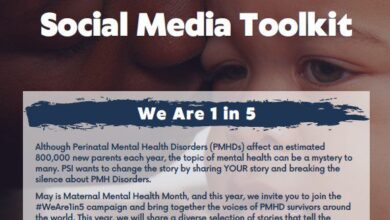Six Tips to Increase Your Milk Supply During Your Period

You may notice that your milk supply decreases when your period returns. The first piece of advice? Try not to be afraid. Then, follow these six tips.
This article was written and reviewed for accuracy by a pediatrician and breastfeeding medicine specialist Dr. Cindy Rubin.
As a breastfeeding parent who just got through their first postpartum period, you may be wondering, “How can I increase my milk supply during my period?” and “Is this permanently?”.
Pediatrician and breastfeeding medicine specialist Dr. Cindy Rubin tells you everything you need to know, including how to increase your supply At this time.
At a glance:
- Supply changes are caused by hormone and mineral changes
- Supply usually decreases in the week before and during the first few days of your period
- You may also experience a decrease in ovulation
- These drops in supply during your period are temporary
- Offering the breast more often or using “switch nursing” can help
- If pumping, add one or two sessions per day as needed
- Follow your baby’s hunger cues and adjust feeds accordingly
- Be patient with your body and give yourself grace
Periods and the effect on your milk supply
The return of menstruation changes after a baby. Some remain amenorrheic (no period) as long as they are exclusively breastfeeding, but some return to their periods about two months after giving birth.
Many women (but not all) experience it decrease in milk production or supply relative to the timing of their period. Often, women experience spotting during the week before their period or in the first two days of their period.
Some women also notice a decrease in production at the time of ovulation. This first dip with ovulation can be as confusing as it may seem milk production decreased for no reason, and you won’t get that a-ha moment until 1-2 weeks later when you start your first period.
Changes in milk supply related to the menstrual cycle are due to natural hormone and mineral fluctuations which occurs throughout the cycle.
Women who breastfeed directly may notice that their baby eats more often. Your baby may wake up to eat at night when they sleep longer stretches or may be more restless throughout the day.
Pumping woman may see a clear decrease in their pumping volume. Either way, it can be stressful, especially for women who exclusively breastfeed their babies.
The good news is that these falls are usually transient, that means they are only temporary. Milk production will usually return to your baseline if you continue nursing and pumping at least as often just like before the sinking happened.
Usually, these changes will not affect a baby’s overall weight gainthough if you’re worried, you can always talk to your baby’s doctor about checking the weight just to be sure.
Sometimes, just knowing that this supply fluctuation is a normal phenomenon and will not be permanent can remove excess pressure and stress from the situation. This in and of itself can help production because sTress can negatively influence milk supply.
Six tips to increase your supply during your period
- Feed or pump more often
- Take a “nursing holiday”
- Stay hydrated, rested, and full
- Know that supplements may or may not help with milk production
- Eat foods that can increase production
- Avoid foods and products known to decrease production
1. Feed or pump more often.
You do not needed to change anything during short drops in production. But if you care directly, your baby may respond by nursing more often or longer. Following your baby’s hunger cues is important if this is the case.
If your baby is fussier when you know it’s that time of the month, you can offer the breast more often. You can also try “switch nursing”. Switch to nursing feeds on one side, then the other, back to the first, and so on until your baby is full.
This method takes advantage of that fact an empty breast will produce more milk while you care for the faithful. Your baby will get “refills” every time you switch sides, and eventually, your baby should be full.
You don’t have to wake your baby up all night nurse if they won’t wake up alone. But if they suddenly wake up more often, it’s okay to take care of them. It could be what they need to get back to sleep instead of reassurance or hug).
Meeting these overnight needs should not prevent them from returning to sleep for longer periods again when your period ends.
If you are pumping, adding 1-2 additional pump sessions per day can help boost your production as well. But as with all things nursing, if adding pump sessions won’t fit into your busy life, that’s OK too.
We need to figure out what works for us and our family.
Related: Exclusive Breast Pumping Schedule by Age

2. Take a “nursing holiday”
When production falls, a “nursing holiday” or “nursing vacation” can significantly boost production. A nursing holiday is when you take a day or two to stay in bed with your baby and let them eat on demand.
It can allowing you to relax while allowing your baby easy access on your chest, making frequent breast care and emptying easier.
This is not always a practical solutionbut it can be a great option if you can afford it.
Nurse holidays require the usual diligence avoid unsafe sleeping situations. But one can still relax in bed with their baby, read, snack, scroll, or any relaxing activity, without unsafe bedsharing during mom’s sleep hours.
3. Stay hydrated, rested, and full.
As always, be sure to take care of yourself. This includes drinking enough water (we like them water bottles for breastfeeding parents!), resting as much as possible, reaching nutritious foodsand eating enough.
If our body or mind is stressed, we may produce less milk.
Schedule yourself loosely when your body’s milk production is naturally low. This will help prevent further reductions in milk production caused by stress.
4. Supplements may or may not help with milk production.
Calcium levels decrease during ovulation and menstruation1, which is the same time that milk production tends to slow down. In theory, a Calcium and magnesium supplements can help maintain or boost milk production in these times.
Like this, herbs used as milk-boosters regular (goat’s rue, silymarin, blessed thistle, and torbangun, to name a few) can help. Unfortunately, the Evidence for herbs and calcium is limited at this time2.
As always, it’s the best talk to your medical provider before starting any supplements to make sure they are safe for postpartum and breastfeeding.
5. Eat foods that can boost milk production.
We have no significant evidence for foods that increase milk production. But there are different foods centuries of anecdotal and cultural evidencesuch as oatmeal and brewer’s yeast2.
There is certainly nothing wrong with eating these things. If anything, they are may help you meet increased caloric needs of all breastfeeding people – that’s about 500 extra caloriess above their usual usage.
6. Avoid foods and other substances that can harm milk production.
We use certain foods to help women reduce their milk supply. These foods and medicines should generally be avoided if you are trying to increase your production. These foods include sage and peppermint.
Pseudoephedrine is a nasal decongestant and is known to reduce milk production3. It should be avoided in situations when milk production is low.

Words of encouragement for your period and affected milk supply
The most important thing to remember is the drops associated with your period temporarily and will not harm your baby. If your baby is eating solid foods, you can supplement those to make up for any lack of milk your baby may experience during your period.
For most, continuing with your regular routine, with more frequent nursing or pumping, will get you and your baby through these blips. And like so many things during postpartum and parenting in general, remember: this, too, shall pass.
Other articles that may help you
Article references
- Susan Thys-Jacobs, Don McMahon, John P. Bilezikian, Cyclic Changes in Calcium Metabolism Across the Menstrual Cycle in Women with Premenstrual Dysphoric Disorder, The Journal of Clinical Endocrinology and MetabolismVolume 92, Issue 8, 1 August 2007, Pages 2952–2959
- Brodribb W. ABM Clinical Protocol #9: Use of Galactogues to Initiate or Augment Maternal Milk Production, Second Revision 2018. Breastfeed Med. 2018 Jun;13(5):307-314.
- Aljazaf K, Hale TW, Ilett KF, et al. Pseudoephedrine: effects on milk production in women and estimation of infant exposure via breastmilk. Br J Clin Pharmacol. 2003;56:18–24.






